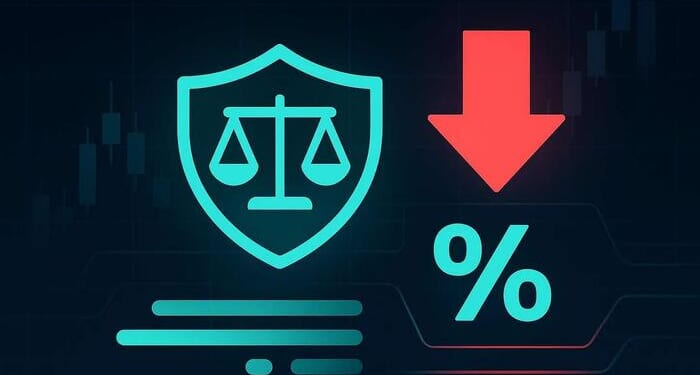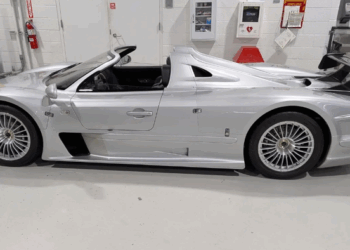After October’s ‘Liquidation Day’ Collapse, ADL Are The 3 Most Important Letters In Crypto
Hyperliquid Activates Cross-Margin Auto-Deleveraging for the First Time: What Are HLP and ADL?
In October 2025, Hyperliquid, one of the leading decentralized perpetual futures exchanges, triggered its cross-margin Auto-Deleveraging (ADL) mechanism for the first time in over two years of operation.
This event signals an extremely volatile market moment — one where even the platform’s own insurance vault (HLP) couldn’t fully absorb liquidation risk.
To understand what this means, we need to unpack two key components of Hyperliquid’s risk architecture: HLP and ADL.
1. What Is HLP?
The Protocol Vault as the System’s Safety Net
HLP stands for Hyperliquid Protocol Vault — essentially a shared liquidity and backstop pool built into the protocol.
Think of it as a public insurance fund or a community vault that anyone can deposit assets into. The funds in HLP serve two main purposes:
1. Provide market liquidity – It helps keep order books liquid, tightening spreads and enabling smoother trading.
2. Act as a backstop during liquidations – When a trader’s position is forcibly liquidated and the market lacks buyers or sellers to absorb the trade, HLP steps in. It takes over the losing position’s remaining collateral and assumes the exposure.
In simple terms, HLP acts as a “public good” mechanism — ensuring that even during severe market shocks, the system remains solvent (no negative equity or bad debt).
Analogy: The Backup Player in a Casino
Imagine Hyperliquid as a massive on-chain casino where everyone’s betting on BTC’s price.
If a player loses all their chips, they must be removed from the table.
But if no one wants to take over that seat, the HLP vault acts like the casino owner’s backup player, stepping in with its own money to keep the game running.
To reduce risk concentration, the protocol splits HLP into several child vaults, each covering different markets or assets.
2. What Is ADL?
The Final Line of Defense: Auto-Deleveraging
ADL, or Auto-Deleveraging, stands for the system’s last-resort risk control mechanism.It only triggers when both regular liquidations and HLP backstops fail.
Why Is Liquidation Needed?
In perpetual futures markets, every long position (betting on price increase) must have a matching short position (betting on a decrease).Each trader provides margin — collateral that ensures they can cover potential losses.
When prices move sharply, losing positions can deplete their margin. To prevent “negative balances,” the system must force-liquidate them — effectively selling or offsetting their positions so that the winner gets paid and the market stays balanced.
Without liquidation, the platform could go insolvent — something no exchange, centralized or decentralized, can afford.
3. The Three-Step Liquidation Waterfall
Hyperliquid’s liquidation process can be visualized as a three-step waterfall:
This third step, rarely used, was just triggered for the first time — showing the system’s self-balancing mechanisms working under stress.
4. How ADL Works in Practice
When a losing side’s margin is completely wiped out and HLP can’t cover the residual loss, the system initiates forced deleveraging from the profitable side.
● Triggered Side: The losing party (e.g., long positions during a crash).
● Providing Side: The winning party (e.g., shorts making large profits).
The system automatically ranks all profitable traders based on:
Profit × Leverage × Position Size
Those with the highest profit and leverage are first in line for forced position reduction — they get partially closed at the current mark price, realizing their gains early.
Why “Punish” Winners?
It’s not about punishment — it’s about maintaining systemic balance.
If no one remains to take the losing side of the contract, the exchange must close out part of the winning side to prevent imbalance.
Analogy: It’s like an oversold flight. The airline first offers incentives for volunteers to step off (market + HLP).When no one volunteers, it forces the biggest seat-holders — the “first-class whales” — to leave.
Unfair? Maybe. Necessary? Absolutely — otherwise the plane can’t take off.
5. Why ADL Matters — and What It Tells Us
ADL is a crisis-only mechanism, designed to protect solvency in extreme market conditions.
● For the platform, it ensures the perpetual futures system never goes bankrupt.
● For traders, it’s a reminder: even if you’re winning big, high leverage exposes you to forced deleveraging.
● For the ecosystem, it demonstrates the maturity of on-chain risk governance — markets that can self-liquidate without external bailouts.
6. The Bigger Picture: A Necessary Imperfection
ADL is not a bug; it’s a safety fuse.
It doesn’t penalize success — it ensures survival. In a leveraged zero-sum system, when volatility dries up liquidity, someone must step out to keep the game fair and solvent.
ADL guarantees that the perpetual futures market — however chaotic — can keep operating.In that sense, an ADL event isn’t a failure.
It’s a sign that the market has reached its stress limit and the protocol has handled it — automatically, transparently, and without human intervention.
Tyler Durden
Fri, 11/28/2025 – 06:30
Source link



















